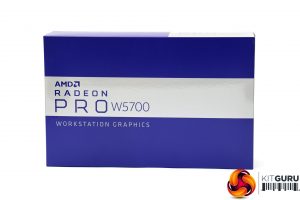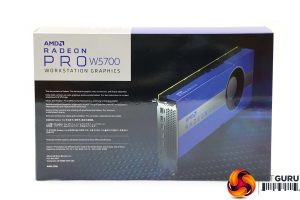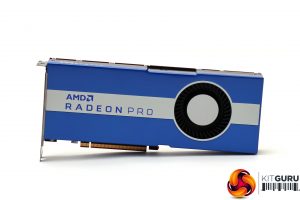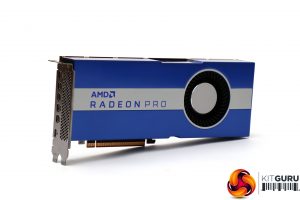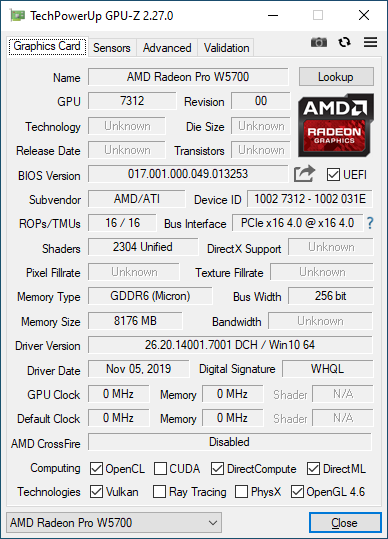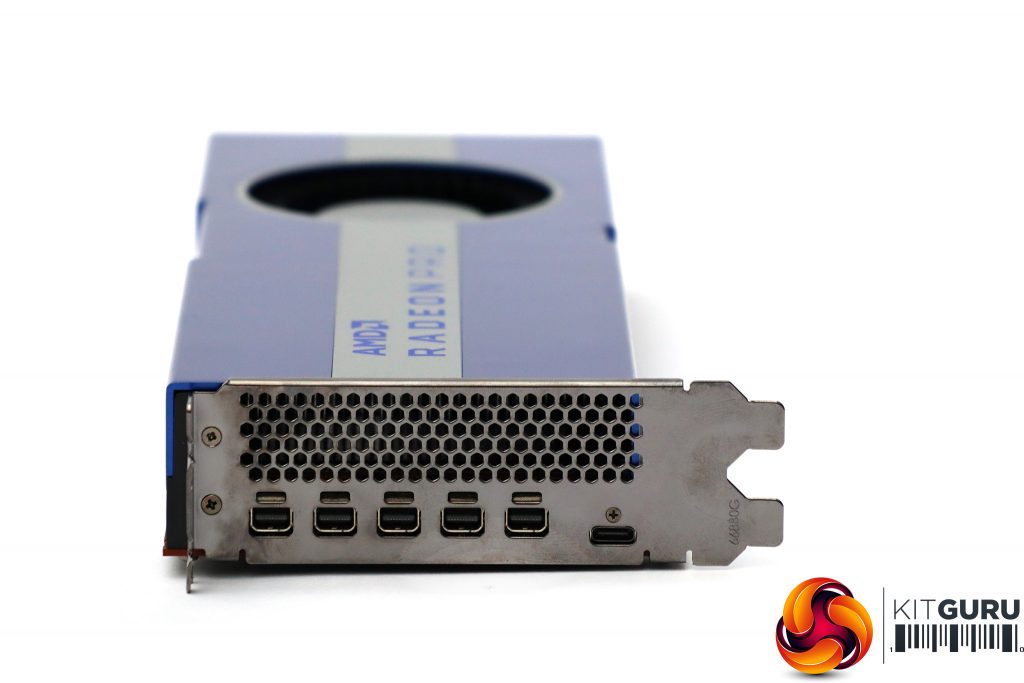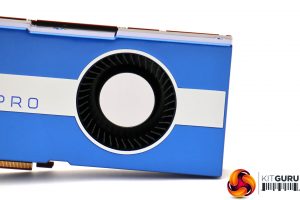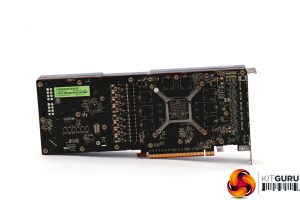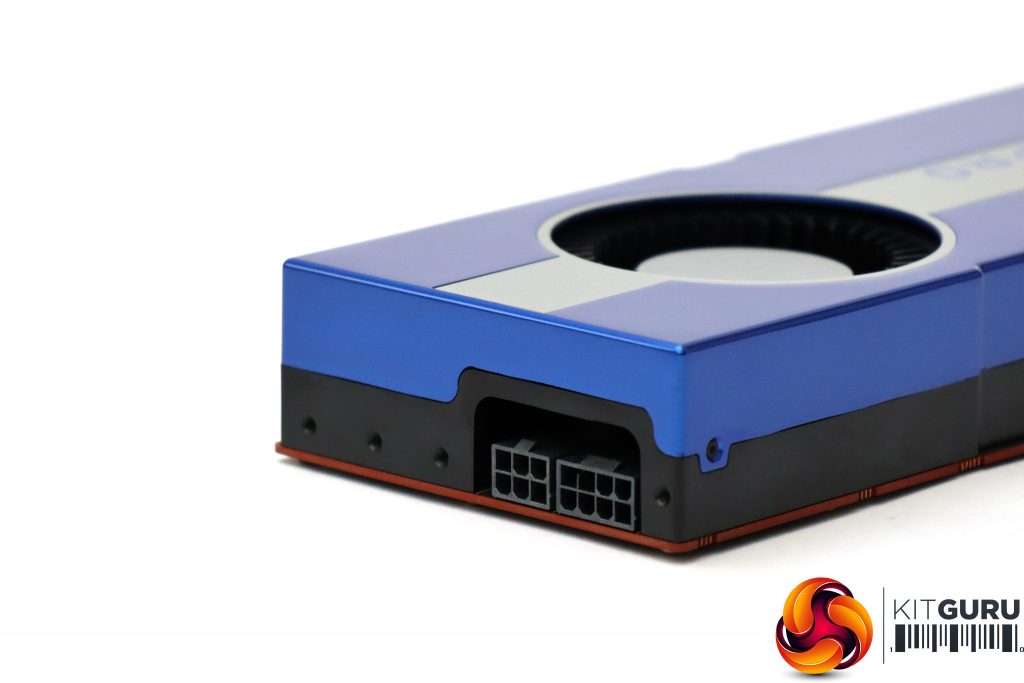The Radeon Pro W5700 looks almost identical to the WX 8200 and 9100, with a dark blue casing and the same cooling system. It's still a dual-slot card, unlike the NVIDIA Quadro RTX 4000.
The W5700 is so new that GPU-Z doesn't detect all its parameters yet, particularly clock speed and GPU details. Looking at the published specs, although the W5700's GPU has only got 2,304 Stream Processors – 36 per cent fewer than the WX 8200 – they can run at up to 1,930MHz, which is 26 per cent faster. So although the WX 8200 is still likely to win on some benchmarks, it won't be by much.
The GDDR6 memory is also very different in specification. The WX 8200's HBM2 memory runs at an effective 2,000MHz but on a 1,024-bit bus. The W5700's GDDR6 memory runs at 14,000MHz on a 256-bit bus. But the end result is quite similar bandwidth. Where the WX 8200 boasts 512GB/sec, the W5700 still manages 448GB/sec, which is more than the Quadro RTX 4000 and on par with the much more expensive RTX 5000.
Another thing worth mentioning is that the W5700 is “PCI Express 4.0 ready”, so can run in this mode when partnered with a motherboard and processor offering PCI Express 4.0 (currently only AMD's latest CPU generation). This offers 1,969MB/sec per lane, twice as much as PCI Express 3.0. So if you're running a lot of PCI Express peripherals, such as multiple graphics cards and storage devices, you will have twice as much headroom.
This is a great graphics card for multi-monitor configurations, too. There's a very healthy five Mini-DisplayPort connections, plus a future-proofing USB-C port that can even supply 15W power for a screen. All the DisplayPorts are 1.4-capable, so can support up to 4K screens simultaneously.
If you use 5K (5,120 x 2,880) screens, you can drive three of these, or a single 8K (7,680 x 4,320) screen. The latter can run at up to 60Hz, too. Now that 8K video production is beginning to arrive, this could well be a valuable feature, although an 8K screen will set you back at least £3,000.
The W5700 is potentially a capable device for GPGPU as well. Whereas NVIDIA cards support CUDA, AMD's support OpenCL, and in this case version 2.0 of the API. With 2,304 Stream Processors running at up to 1,930MHz, there's a decent amount of grunt for activities like GPU-powered animation rendering or video encoding.
There's more to the RDNA architecture than just a 7nm die shrink compared to the previous 14nm. AMD claims an average 25 per cent more instructions per clock compared to GCN 5.0 used in the WX 8200, and much higher efficiency, with up to 41 per cent higher performance per Watt.
The Radeon Media Engine will decode VP9 or H.265 video up to 8K at 24fps and 4K at 90fps. There's encoding support up to 4K in H.264 and H.265 as well. There's also a feature called Image Boost, which allows the card to render your screen at a higher resolution and then down-sample to the native resolution, providing greater perceived detail.
Although AMD's graphics cards are efficient in terms of instructions per Watt, they do tend to have slightly higher overall TDP ratings than their NVIDIA equivalent. Where the NVIDIA RTX 4000 is rated at 160W, the AMD Radeon Pro W5700 is rated at 205W, although this includes extras like the 15W USB-C power supply ability.
These are just ratings and the more relevant measurement is how much work is done per Watt. However, you do need both 8-pin and 6-pin power connectors with the W5700, whereas the RTX 4000 uses just a single 8-pin.
Be sure to check out our sponsors store EKWB here
 KitGuru KitGuru.net – Tech News | Hardware News | Hardware Reviews | IOS | Mobile | Gaming | Graphics Cards
KitGuru KitGuru.net – Tech News | Hardware News | Hardware Reviews | IOS | Mobile | Gaming | Graphics Cards


